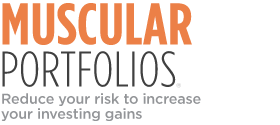The June 23, 2016, vote in Great Britain to leave the European Union shook the world. The following Friday and Monday saw the value of global equities driven down by $3 trillion — the worst two-day rout ever, exceeding even the losses after the 2008 Lehman Brothers bankruptcy.
The S&P 500 dived 5.3% on those two volatile days. But both the Mama Bear and Papa Bear actually rose, thanks to their fully disclosed strategy rules. The portfolios had rotated into bonds, precious metals, and commodities weeks or months before the shock wave struck. As a result, both portfolios were up 2.6% in two days as their assets rose, sparing investors from the agony that gripped most stock-market players.
For the first six months of 2016, the Mama and Papa were up 10.5% and 6.3%, respectively, while the S&P 500 including dividends was up only 4.1%. The two Muscular Portfolios also suffered only minor drawdowns in early 2016 — the Mama declined only 2.3%, for example — despite the S&P 500 subjecting investors to a gut-wrenching 10.3% dive in its January-February collapse.
For more details, see Newsletter #6.
